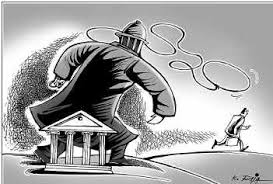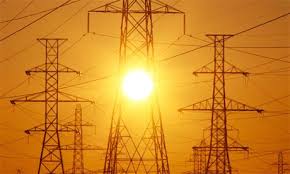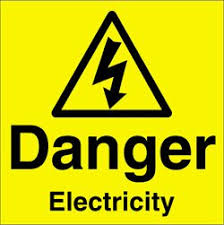skip to main |
skip to sidebar
 Source :Press Trust of India / Mumbai November 13, 2011, 14:12 IST
Photo : business line
Source :Press Trust of India / Mumbai November 13, 2011, 14:12 IST
Photo : business line
Following a steep rise in bad assets in the past two quarters, public sector banks say they are devising ways to ramp up recovery in the rest of this fiscal, such as setting up special recovery cells and aggressive follow-up of sticky accounts.
Some banks are even mulling offloading some of the non- performing assets to asset reconstruction companies in the fourth quarter, to clean up the balance sheets.
"We have a high focus on recovery. We have instructed teams of general managers to work towards this. In some cases, we are trying to recover the loan amounts through compromise settlements and one-time settlement schemes," Indian Overseas Bank Chairman and Managing Director M Narendra told PTI.
The Chennai-based public sector lender, which recovered around Rs 600 crore in the first half, aims to recover around Rs 850 crore in the second half, he said, adding that the bank will open 'asset recovery branches' soon.
Gross NPAs of listed banks crossed Rs 1 trillion by the end of the September quarter, a full 33 per cent higher than a year ago, on the back of a hardening interest rate regime, slackening growth in some sectors like steel and mining, along with system recognition of bad assets.
Since March 2010, the Reserve Bank has upped short term lending rates 13 times to tame inflation to 8.5%.
Most of the incremental addition of NPAs has happened in public sector banks, which control 75% of the system.
"Due to system recognition, the flexibility of classifying NPAs is no longer there. So, we start following up a sticky account after 60 days in case of possible defaults," Bangalore-based state-run lender Vijaya Bank's Executive Director Subhalakshmi Panse pointed out.
A standard asset turns a non-performing one if the borrower doesn't service the loan for 90 days.
Panse also said a special department is taking care of the bank's recovery efforts now.
Vijaya Bank had a cash recovery of Rs 354 crore in the first half, while it upgraded Rs 890 crore worth of portfolio during the same period.
Referring to this, a top bank official of IDBI Bank said though his bank can't give a recovery target for the second half, it is looking at recovery on case to case basis.
"Our approach is case to case basis. While some of them are restructured, some are settled though compromise and in others we have to take legal route," IDBI Bank Executive Director Rajkumar Bansal said.
Bankers also said they would take a call by December end whether to offload some of the bad assets to asset reconstruction companies (ARCs).
"We had offloaded around Rs 330 crore of bad assets last financial year to ARCs. Going forward, we will take a call about this," Narendra of IOB said.

Source :HT Correspondent, Hindustan Times:New Delhi, November 14, 2011
Banks, which already have an exposure of over Rs 80,000 crore to airline majors, are shying away from providing any further financial assistance to the cash-starved sector. Jet Airways and SpiceJet also posted losses recently.
Banks have an exposure of Rs 43,000 crore to Air India,
Rs 13,000 to Jet and
Rs 7,000 crore to Kingfisher.
Banks are closely watching the performances of each of the loan accounts.
The gross non performing assets (NPAs) of public sector banks for the period ending March stood at Rs 71,047 crore.
The figure is set to significantly rise with several corporate loans turning bad.
"We are not in favour of providing any further loan to airline majors, especially in the private sector," a public sector bank chairman told HT.
 Source : Live Mint:Utpal Bhaskar & Anup Roy: Tue, Nov 15 2011. 1:05 AM IST
The numbers point to the increasing possibility of a debt crisis in the Indian banking system.
Source : Live Mint:Utpal Bhaskar & Anup Roy: Tue, Nov 15 2011. 1:05 AM IST
The numbers point to the increasing possibility of a debt crisis in the Indian banking system.
While 60% of the loans were given by state-owned Rural Electrification Corp. Ltd and Power Finance Corp. Ltd (PFC), the rest have come from banks
The electricity distribution utilities of Tamil Nadu, Bihar and Punjab have loans worth Rs. 61,000 crore against their name and an aggregate net worth of a negative Rs. 34,000 crore.
 In all, distribution firms across India, most of which are owned by the states, owe a staggering Rs. 1.77 trillion.
In all, distribution firms across India, most of which are owned by the states, owe a staggering Rs. 1.77 trillion.
The numbers point to the increasing possibility of a debt crisis in the Indian banking system. While 60% of the loans were given by state-owned Rural Electrification Corp. Ltd and Power Finance Corp. Ltd (PFC), the rest have come from banks.
Although none of the loans have yet been classified as bad loans, or non-performing assets (NPAs), they are being closely tracked by banks.
According to a Mint analysis last week, the NPAs of 36 listed banks have risen 33% over the past year.
On Wednesday, citing concerns over asset quality, rating firm Moody’s downgraded the outlook on India’s Rs. 64 trillion banking sector to negative from stable.
State electricity boards (SEBs) are using the money to “meet their working capital requirements” despite taking them for “capacity addition”, said a senior government official, who did not want to be named.
According to PFC, Tamil Nadu’s distribution utility has loans of Rs. 32,000 crore on a net worth of a negative Rs. 22,700 crore, Rajasthan’s Rs. 32,800 crore on a net worth of Rs. 3,800 crore, Haryana’s Rs. 11,000 crore on a net worth of a negative Rs. 3,000 crore, Punjab’s Rs. 17,000 crore on a net worth of a negative Rs. 6,800 crore, and Bihar’s Rs. 12,000 crore on a net worth of a negative R 4,500 crore.
The fault isn’t that of the distribution utilities, said a PFC executive, who did not want to be named. “The responsibility lies with the state government,” he said.
No distribution utility has as yet approached the bank with a restructuring plan, said M. Narendra, chairman and managing director of Indian Overseas Bank.
Most Indian states are loath to charge adequately for electricity, especially that supplied to farmers, out of fear of antagonizing their voter base.
Many distribution utilities are saddled with losses arising from theft, inefficient transmission and billing inefficiencies. Some regularly buy expensive power to tide over short-term deficits, and many haven’t revised rates in years.
India has 73 distribution utilities, including a handful of private ones in states such as Delhi that have privatized electricity distribution.
The poor financial health of these distribution firms means they cannot raise money at all, or can do so only at very high interest rates.
Worse, since they are the main customers of power generation companies, there is a growing reluctance among both investors and financiers to invest in the latter.
Ideally, distribution companies “should be able to generate surplus and meet their obligations”, said India’s power secretary P. Uma Shankar. “A number of state governments are already taking steps to put in order the finances of their distribution companies.” That includes aligning tariffs, converting government loans into equity, increasing their liquidity and providing them with interest-free loans.
Thus far, distribution utilities have been able to service their loans, said Santosh Nair, deputy managing director (corporate banking) at State Bank of India (SBI).
Still, “while state electricity boards have not become NPAs yet, but they are showing some signs of stress and we may have to restructure” loans issued to some of them, he added.
SBI has an exposure of around Rs. 1,200 crore to distribution utilities and Rs. 9,000 crore in all to SEBs.
There is no “stress visible so far”, said M.D. Mallya, chairman, Indian Bank’s Association, and chairman and managing director of Bank of Baroda.
If banks aren’t worried it is because, as D. Sarkar, executive director of Allahabad Bank, puts it, the distribution companies are “backed by government guarantees”.
While that may be the case now, it is unlikely that distribution utilities will be able to continue to service debts as their losses increase.
 The cumulative losses of the distribution utilities are around Rs.75,000 crore, and if the present trend continues, their projected losses in 2014-15 will be Rs. 1.16 trillion, according to a study conducted by energy consulting company Mercados EMI Asiafor the 13th Finance Commission.
The cumulative losses of the distribution utilities are around Rs.75,000 crore, and if the present trend continues, their projected losses in 2014-15 will be Rs. 1.16 trillion, according to a study conducted by energy consulting company Mercados EMI Asiafor the 13th Finance Commission.
 Fitch Ratings on Monday said that losses at state power utilities could threaten fiscal consolidation in five Indian states—Rajasthan, Tamil Nadu, Madhya Pradesh, Uttar Pradesh and Bihar.
Fitch Ratings on Monday said that losses at state power utilities could threaten fiscal consolidation in five Indian states—Rajasthan, Tamil Nadu, Madhya Pradesh, Uttar Pradesh and Bihar.
“Losses in power distribution in these states exert additional pressure on state finances and it would be difficult for these states to achieve the fiscal consolidation targets established by the 13th Finance Commission,” said Devendra Kumar Pant, director in Fitch’s international public finance team.
http://bankfinanceindia.blogspot.com/
 Source :Express News Service: Ahmedabad:Sun Nov 13 2011, 03:15 hrs
Source :Express News Service: Ahmedabad:Sun Nov 13 2011, 03:15 hrs
The Reserve Bank of India (RBI) has cancelled the banking licence of Gujarat Industrial Co-operative Bank.
The bank’s fate became uncertain after RBI clamped restriction on it due to insolvency.
The only saving grace is that 96 per cent of its depositors hold less than Rs 1 lakh in it and thus their deposits are covered by insurance.
B R Divanji, chief executive officer, has said the bank has been under an administrator since September 2008 when RBI had imposed restrictions on it under section 35A of Banking Regulation Act. In Surat alone, where it had nine out of 20 branches, had withdrawn over Rs 31 lakh in a single day. Depositors holding more than Rs 1 lakh in this bank are 8,100 and they constitute four per cent of total Rs 2.05 lakh depositors as of now. They hold Rs 190 crore collectively.
The bank has 20 branches in the state. It has been facing crisis for long and which has become the cause of its closure. Divanji said that the total deposits as on date stood at Rs 507 crore while its non-performing assets (NPAs) had crossed Rs 350 crore. In March 2008, the NPA level were Rs 201 core and instead of going down it rose to Rs 198 crore by October 2010.
.
 Source :ET:13 NOV, 2011, 11.01AM IST, PTI
Source :ET:13 NOV, 2011, 11.01AM IST, PTI
NEW DELHI: Bad loans of the listed banks in the country soared by 33.46 per cent to over Rs 1 lakh crore during the second quarter of this fiscal reflecting the impact of rising interest rates and a slowing growth.
The gross non-performing assets of State Bank of India (SBI), the country's largest bank, rose by 46 per cent to Rs 33,946 crore during the July-September quarter.
However, private sector lender ICICI Bank reported a modest 0.39 per cent increase in gross NPA to Rs 10,021 crore.
According to an analysis of 37 listed banks in the country, the gross NPA have gone up to Rs 1.06 lakh crore during the September quarter from Rs 79,078 crore in the corresponding period last year.
Analysts said the steep rise in interest rates over the past 18 months has led to a sharp increase in bad loans. The Reserve Bank of India has increased its lending (repo) rate 13 times since March, 2010 to tame inflation.
The banks are also under pressure from loans outgoes to the sectors facing delays in execution of projects due to the uncertainty on various regulatory issues, thereby, raising concerns over the companies' ability to timely repay loans.
Loans given to mining and power companies might become non performing assets (NPAs) for the banking sector as the delay in completion of projects on the back of regulatory hurdles can impact the corporate profits.
Already, the rise in bad loans has not gone down too well with investors. Shares of SBI lost as much as 7 per cent on the day of its result.
SBI's NPAs rose mainly from loans to export-oriented sectors, iron-steel, agro-based businesses and the government- -sponsored schemes.
Besides, the NPA of Punjab National Bank ( PNB) rose by 29 per cent during the quarter to Rs 5,150 crore.
Even global ratings firm Moody's has said that slowing economic growth could increase bad loans and impact profitability of companies.
However, another global rating agency S&P has upgraded Indian's banking sector, saying that domestic regulations are in line with international standards.
RBI has also said that the Indian banking sector is not facing any stress and there is no indication of a systemic threat.
Repeated rate hikes by the central bank has increased borrowing costs for corporates and slowed project investments.
This is getting reflected in the index of industrial production which fell to 5 per cent in the April-September period from 8.2 per cent in the same period last year.
RBI has projected that Indian economy will grow at 7.6 per cent this fiscal, which is lower than 8.5 per cent growth recorded in 2010-11



